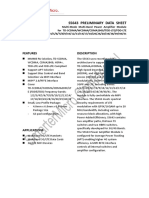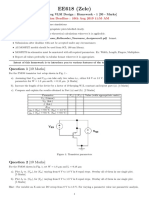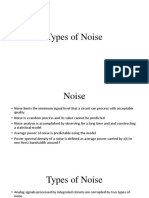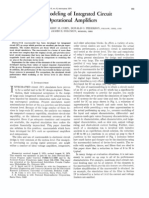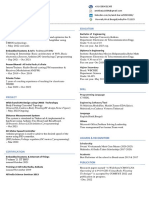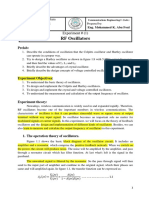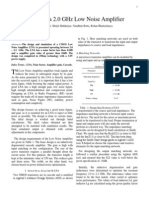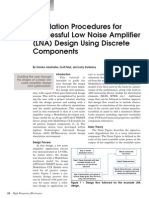100% found this document useful (1 vote)
174 views2 pagesLna Simulation Matlab
The document outlines a procedure for simulating and evaluating a Low Noise Amplifier (LNA) using MATLAB, focusing on its gain, noise figure, and input/output matching. It includes steps for modeling the LNA, setting parameters, analyzing performance through plots, and provides MATLAB code for implementation. Expected results indicate a gain of around 15 dB, a noise figure of approximately 1.2 dB, and S11/S22 values ideally below -10 dB for optimal matching.
Uploaded by
mmmsmaheshwaranCopyright
© © All Rights Reserved
We take content rights seriously. If you suspect this is your content, claim it here.
Available Formats
Download as PDF, TXT or read online on Scribd
100% found this document useful (1 vote)
174 views2 pagesLna Simulation Matlab
The document outlines a procedure for simulating and evaluating a Low Noise Amplifier (LNA) using MATLAB, focusing on its gain, noise figure, and input/output matching. It includes steps for modeling the LNA, setting parameters, analyzing performance through plots, and provides MATLAB code for implementation. Expected results indicate a gain of around 15 dB, a noise figure of approximately 1.2 dB, and S11/S22 values ideally below -10 dB for optimal matching.
Uploaded by
mmmsmaheshwaranCopyright
© © All Rights Reserved
We take content rights seriously. If you suspect this is your content, claim it here.
Available Formats
Download as PDF, TXT or read online on Scribd
/ 2













